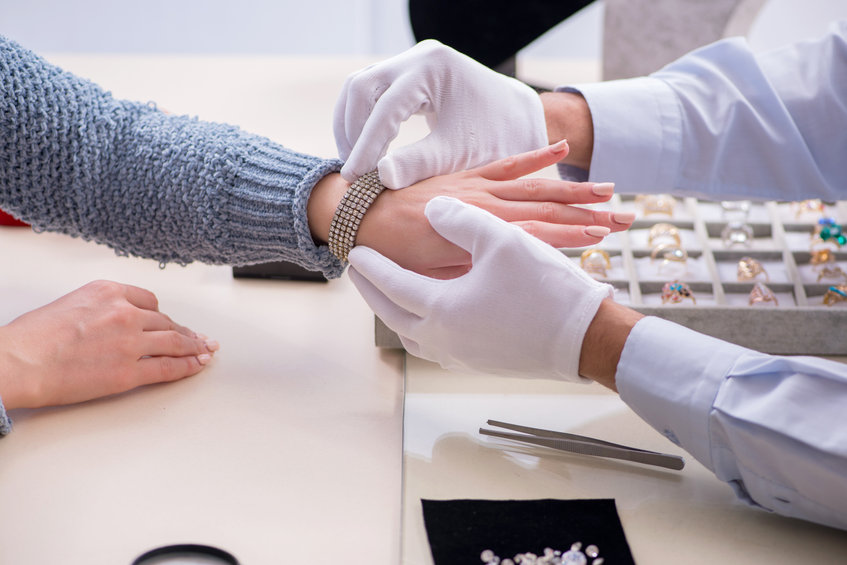
Fine jewelry should last a lifetime, its beauty and design never fading. That’s why you will want to spend some extra time ensuring you are buying something you will love so much you’ll want to leave it to your children one day.
When it comes to a diamond, the value is based on the four C’s: carat, color, clarity, and cut. Carat refers to the weight of the diamond, and your jeweler should tell you that this is not always exact, but a range. For example, a half carat diamond can range between .47 and .54 carat. Color is classified from colorless to yellow, with colorless being more valuable than a diamond with a yellowish hue. The cut of diamond refers to the way it is fashioned, which is all about personal preference. And clarity is an indication of how flawless the diamond is. Take these four considerations to your jeweler before you buy to ensure you get what you really want.
Natural gemstones are the most valuable, but synthetic stones look almost exactly the same. Some jewelers offer imitation stones that look like natural stones, but they are probably made of glass or even plastic. Colored gemstones allow light to pass through a little more clearly, making the stone brilliant and a popular choice. Be sure to ask your jeweler if the gemstone is natural or synthetic or an imitation and ask if the stone was treated and how. Treated stones have improved durability but it may lower the gem’s value.
When used alone, the word “gold” means 24 karat. For jewelry purposes, gold is usually mixed with other metals to increase its durability since gold is such a soft metal. Ask your jeweler if the piece you are buying is 18K (which is about 75% gold), 14K (about 58% gold), or 10K (about 42% gold). Under U.S. law, 10K gold is the lowest level allowed to be sold. One defining factor of gold is that a higher karat piece will be more yellow and slightly softer than a lower karat piece.
Like gold, platinum is also mixed with other metals. You will want to check the markings to ensure you’re getting what you’re paying for. For example, a 900 Platinum (or 900 PT) marking will tell you the piece is 90% platinum. Also note, platinum is a bit more expensive because of the expert craftmanship that is required.
Natural pearls are made from oysters or mollusks. Sometimes an irritant can be introduced into the shells to force a pearl to grow. These pearls are called cultured pearls. Natural and cultured pearls are rare in today’s market, but imitation pearls are very common. Be sure to ask your jeweler which type they carry. Pearls are evaluated according to their size, shape, color, luster, and blemishes. Their skin thickness should also be considered, with longer cultivated pearls having thicker skin, which means longer lasting and more beautiful.
A reputable jeweler such as Timeless will answer all these questions, informing you of the best decision for your budget and needs.